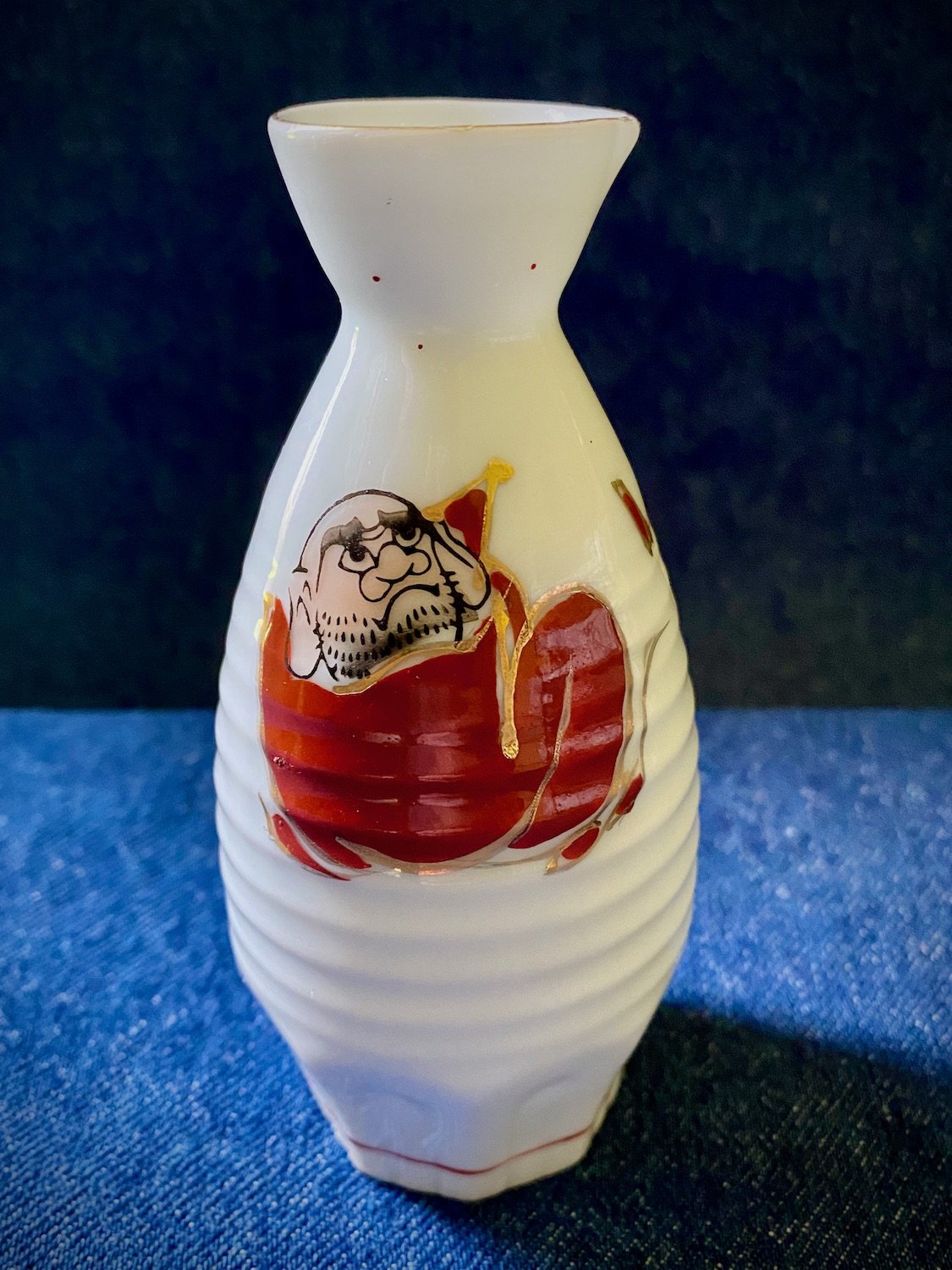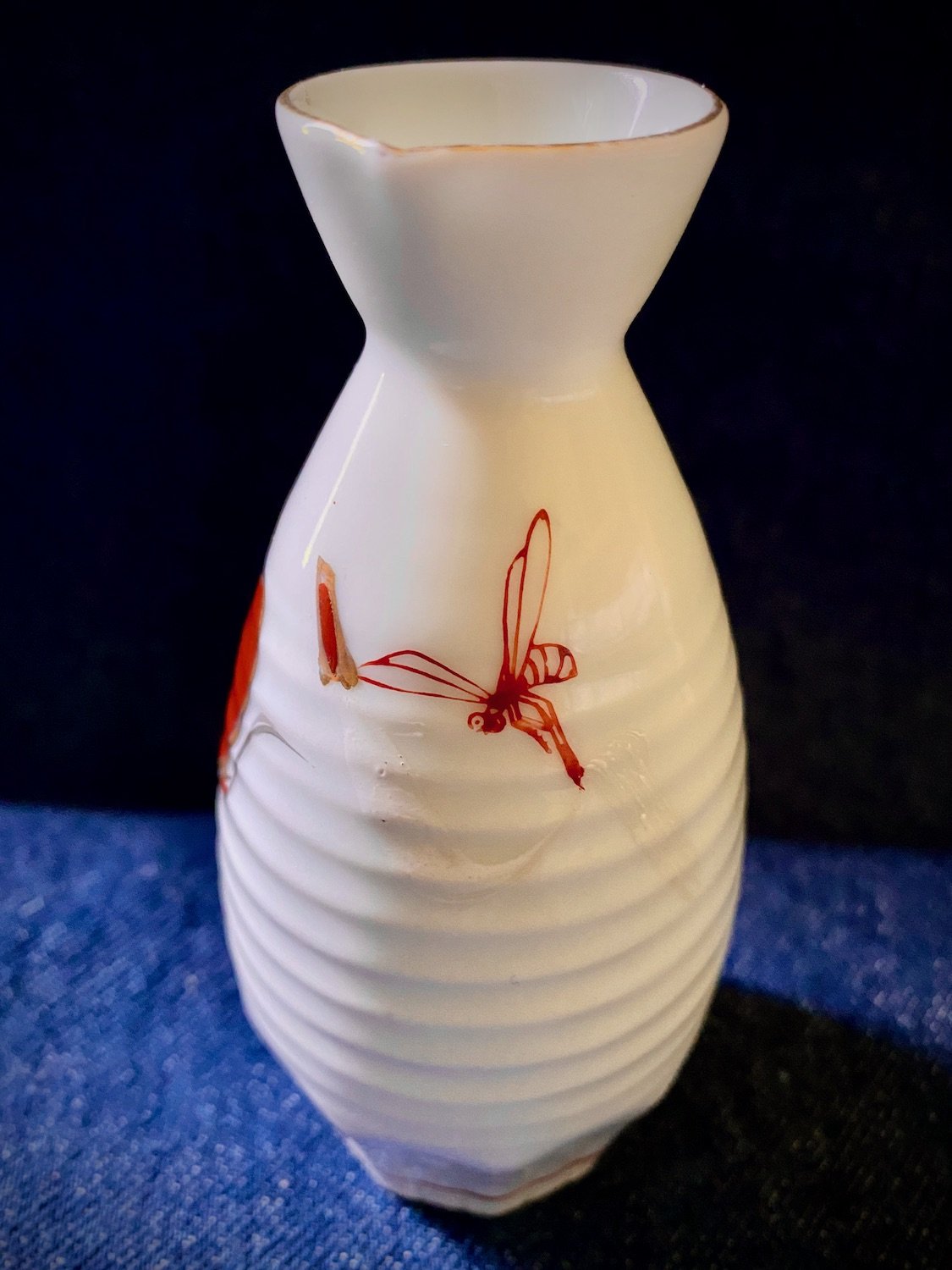 Image 1 of 4
Image 1 of 4

 Image 2 of 4
Image 2 of 4

 Image 3 of 4
Image 3 of 4

 Image 4 of 4
Image 4 of 4





Daruma & Mosquito Tokurri
This charming little koturri (sake decanter) is an example of Kutani ware (九谷焼, Kutani-yaki), decorated porcelain first produced in the mountain village of Kutani (Ishikawa prefecture) during the Early Edo period. Kutani ware is known for detailed decoration, employing polychrome glazes and metallic over-glazing. Red-and-gold decorated Kutani ware dates from the Meiji Restoration (1868), and remains popular today.
The image depicts Daruma and a rather large mosquito. The mosquito is carrying a hossu, or fly-whisk, a tool used by meditating Buddhist priests and monks to shoo away insects without harming them. Hossu are also seen as “spiritual tools” able to banish any demons, or intrusive thoughts, that might disturb one’s meditation. Why is Daruma putting up with this pesky mosquito? We cannot say with any certainty, but the answer may lie in these words from the late Sōtō Zen priest Kōbun Otogawa:
“When you meet one little being, it might be a mosquito, or pine tree, or rock, to become Buddha with each of them is your practice. Do you understand? You become Buddha with each of them. This is communicating with a being that appeared for you, to make sure you are enlightened! It is also enlightened. This is how everything is actually happening but sometimes neither one knows what is going on. Sometimes both completely know what is going on.”
5” x 2.5”
This charming little koturri (sake decanter) is an example of Kutani ware (九谷焼, Kutani-yaki), decorated porcelain first produced in the mountain village of Kutani (Ishikawa prefecture) during the Early Edo period. Kutani ware is known for detailed decoration, employing polychrome glazes and metallic over-glazing. Red-and-gold decorated Kutani ware dates from the Meiji Restoration (1868), and remains popular today.
The image depicts Daruma and a rather large mosquito. The mosquito is carrying a hossu, or fly-whisk, a tool used by meditating Buddhist priests and monks to shoo away insects without harming them. Hossu are also seen as “spiritual tools” able to banish any demons, or intrusive thoughts, that might disturb one’s meditation. Why is Daruma putting up with this pesky mosquito? We cannot say with any certainty, but the answer may lie in these words from the late Sōtō Zen priest Kōbun Otogawa:
“When you meet one little being, it might be a mosquito, or pine tree, or rock, to become Buddha with each of them is your practice. Do you understand? You become Buddha with each of them. This is communicating with a being that appeared for you, to make sure you are enlightened! It is also enlightened. This is how everything is actually happening but sometimes neither one knows what is going on. Sometimes both completely know what is going on.”
5” x 2.5”